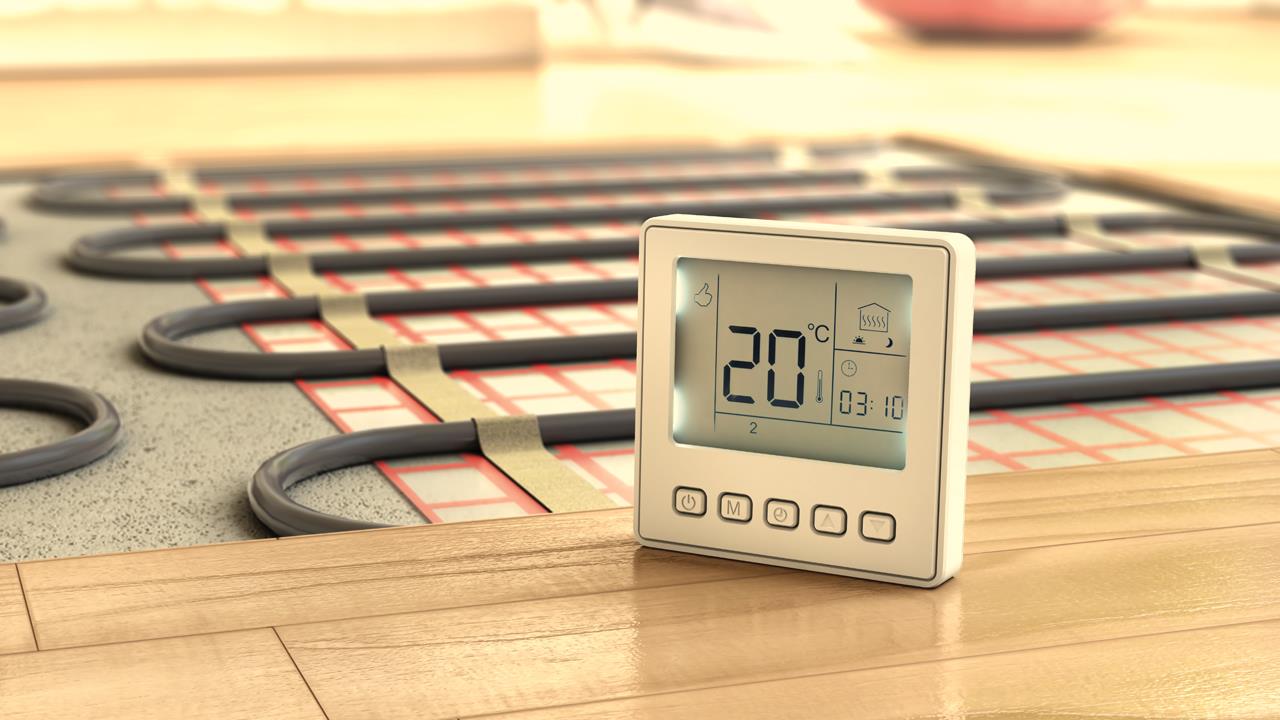


Paul Harmer, Lead Technical Consultant for the CIPHE, advises how to eliminate pressure loss in underfloor heating through careful design.
The popularity of underfloor heating (UFH) means that many more professional plumbing and heating engineers are upskilling to be able to offer this service.
For many of those who are new to installing UFH however, problems such as pressure loss can be the source of headaches. The right amount of flow and available head of pressure is needed in order to achieve an even heat distribution between the rooms with UFH, so it is important to get it right.
Pressure loss
Before commencing the UFH system design, a designer would normally stipulate the maximum permissible pressure loss per circuit, 20kPa, for example. In addition to this, the designer would also need to calculate the pressure loss through the mixer valve, manifold, and isolators at the specified design flow rate.
The design flow rate is the total flow rate of all of the UFH circuits added together. For example, a 12-port manifold with a flow rate of 2l/min per circuit (24l/min total).
This total flow rate is used to calculate the pressure loss at both the manifold and thermostatic mixing valve. A typical UFH thermostatic mixing valve may have a pressure loss of 55kPa with a flow rate of 24l/min and 11kPa for the isolators and manifold.
Once the largest pressure loss has been calculated via the UFH circuit loop at 20kPa, the pressure loss through 12-port manifold and isolators (11kPa) and the pressure loss through the thermostatic mixing valve (55kPa) results in a total pressure loss of 86kPa.
With this in mind, it is possible to plot the duty point onto a Grundfos UPS2 15/50/60 using the following data: pressure loss 86kPa, flow rate 24l/min.
It doesn’t take long to realise that when designing UFH systems with manifolds greater than 10 ports, the integral pump supplied with the unit may not be capable of delivering enough heat to the heat emitter.
Therefore, it may be difficult for the installer to diagnose a UFH system that is suffering from a lack of available pump pressure. The installer, for instance, may suspect that air in the system is preventing the flow meters from rising, or that the correct UFH floor construction has not been selected.
Getting it right
When fault finding, engineers must always take time to reflect and analyse any assumptions. Being able to diagnose why an issue is taking place needs sound technical understanding, in addition to a common-sense approach. Over many years of designing UFH systems, I have always considered the effect on pressure loss through the UFH manifold and thermostatic mixing valve.
In instances where UFH schemes are designed and supplied to the installer that only cover the design of the UFH and not the rest of the heating system, it is important for installers to be careful.
Everything from selecting the correct sized pump and the correct primary pipe size to feed the UFH manifold and pump station from the boiler is all going to impact the running of the UFH system.
If you'd like to keep up-to-date with the latest developments in the heating and plumbing industry, why not subscribe to our weekly newsletters? Just click the button below and you can ensure all the latest industry news and new product information lands in your inbox every week.